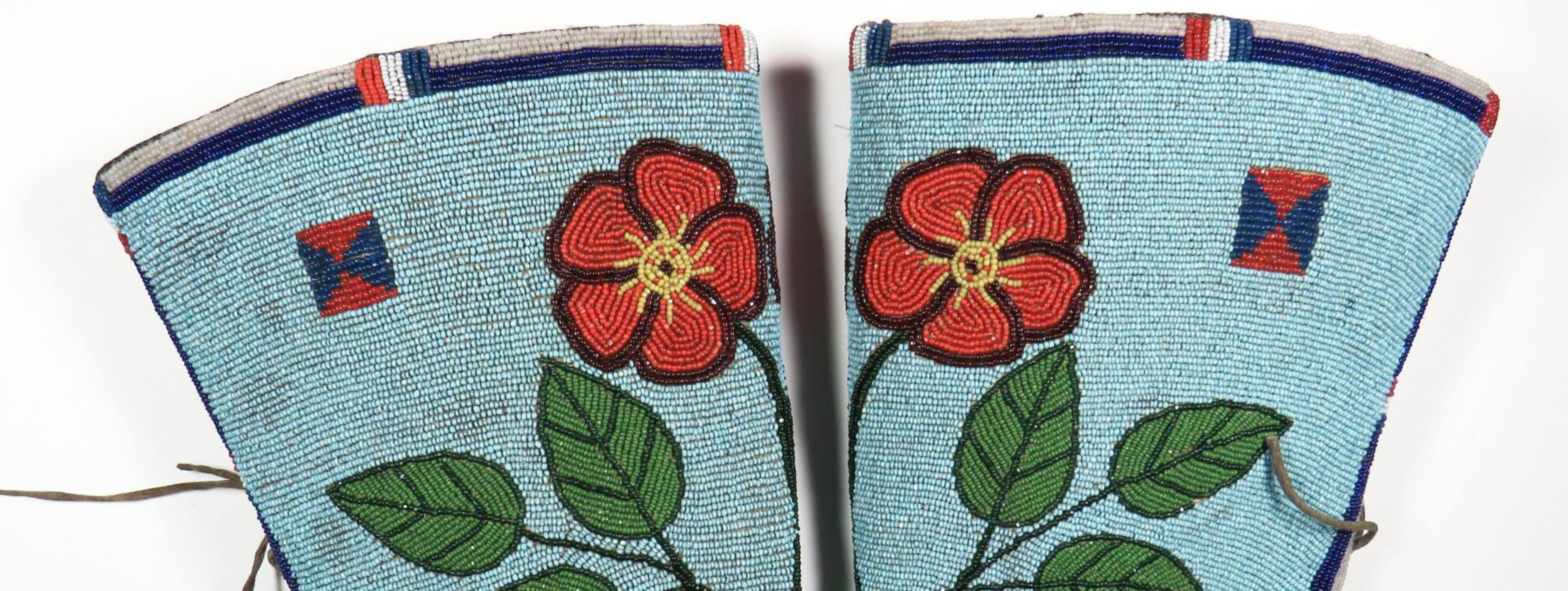
This collection includes works from across North America, ranging from objects made by Indigenous peoples, European settlers, and works created for the Works Progress Administration (WPA). This introductory text to the North American Collection was written by former MAC Intern, Abby Wiggins (Class of '24), who is now an Advanced-Level Intern at the Smithsonian American Art Museum, working on the curation of Time-Based Media and Folk and Self-Taught Art.
The Madison Art Collection contains more than 50 objects from North America, most of which were made after Europeans settled on the continent. This ranges from objects created by Indigenous makers to those manufactured in Europe by trading companies. These items often moved between different communities, reflecting the complicated cross-cultural interactions that occurred in the colonial era and endowing singular objects with multiple layers of meaning. For example, items made by Native Americans to trade with tourists who desired “authentic” souvenirs reveal dynamics that emerged as a consequence of colonization, affecting how settlers and Indigenous people saw themselves in relation to others. Other items in this collection area include arrowheads, trade beads, textiles, and clay pipes. The objects date from the seventeenth century until the first half of the twentieth century.
The majority of items in this collection were acquired through a 1976 donation made by the late James Madison University professors Drs. John and Bessie Sawhill. The Sawhills acquired these objects at an auction of the estate of the coin collector Howard D. Gibbs held by the Hans M.F. Schulman Gallery in 1971. The catalog of this auction categorizes the items for sale as a “coin and primitive money collection,” despite the fact that many of the listings did not actually fall under this category. This reflects the attitudes and interests of collectors in the twentieth century, as many of the items were simply ancient or non-Western, but were often given exoticized histories to appeal to the curiosity of buyers.
Unfortunately, much of the original information about these items is lost. Their provenance can be difficult to trace back further than Gibbs and the information provided in the auction catalogs of the 70s is often untrustworthy. Though it may now be impossible to piece together the complete stories of many of our objects, our collection does help us understand the deeply flawed habits of collectors, especially in the 20th century. It reveals the biases held by figures in the art market and shows how their practices perpetuated harmful stereotypes that persist to this day. Not only did these collectors make research incredibly difficult by removing objects from their original contexts and providing little documentation, but they also often ended up harming the communities they collected from, depriving them of their own cultural heritage.
The Madison Art Collection is a repository for several objects on loan from the federal government. Between 1936 and 1939, the Works Progress Administration (WPA) loaned around 20 textiles and paintings to the Virginia State Teachers College, now James Madison University. The WPA was a federal New Deal Agency that collaborated with state and local governments to provide employment during the Great Depression, often through the execution of public works projects.
ACKNOWLEDGEMENT/COMMITMENT:
We are aware that the limits of cataloging practices often fail to honor the complete significance of certain objects and we are committed to exploring new possibilities of categorization that may better highlight their meanings. In addition, we welcome collaboration with Indigenous communities and aim to document and display our collection in a manner that is respectful and accurate. We are committed to identifying any culturally sensitive materials and working with cultural authorities to repatriate NAGPRA items in our collection.
Abby Wiggins, Class of 2024
